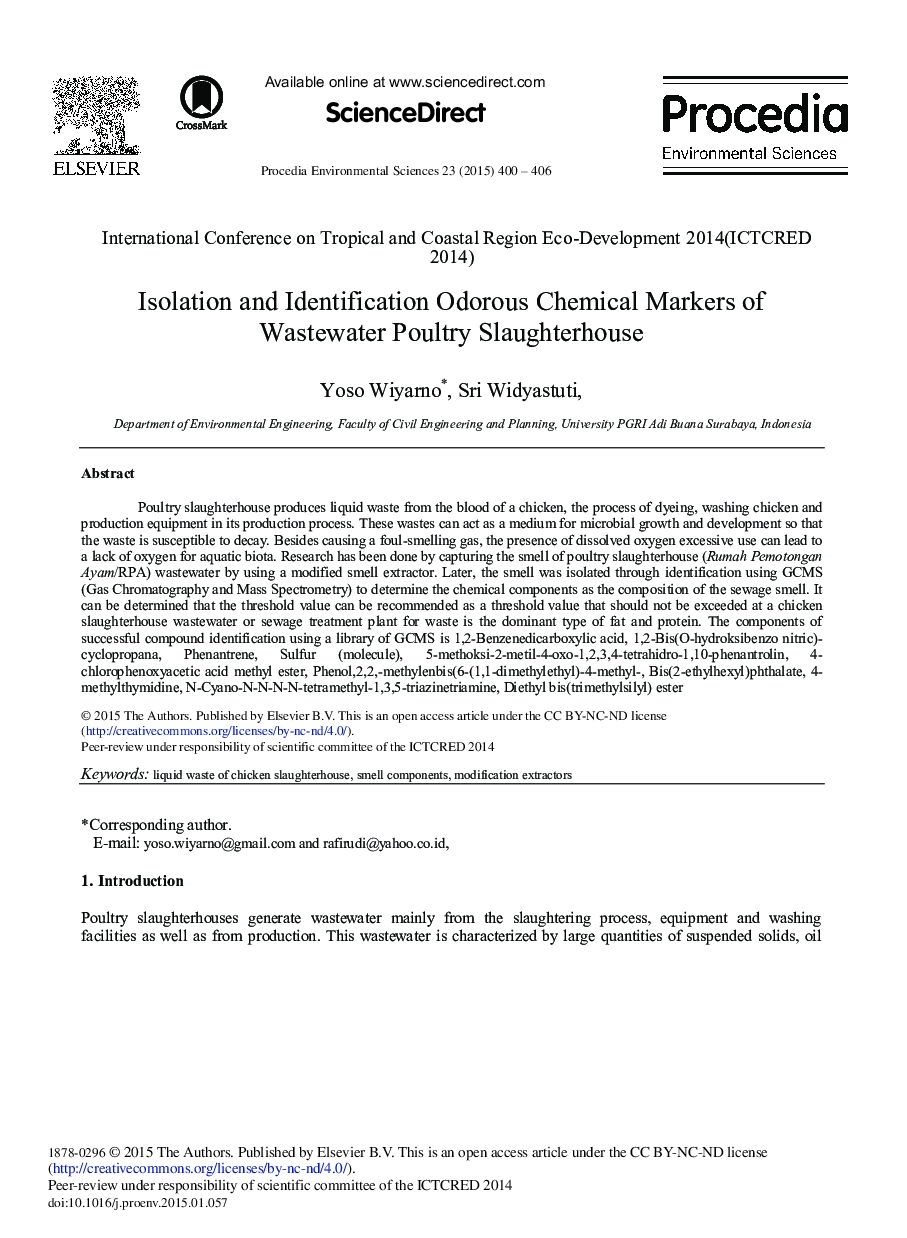| Article ID | Journal | Published Year | Pages | File Type |
|---|---|---|---|---|
| 4402353 | Procedia Environmental Sciences | 2015 | 7 Pages |
Poultry slaughterhouse produces liquid waste from the blood of a chicken, the process of dyeing, washing chicken and production equipment in its production process. These wastes can act as a medium for microbial growth and development so that the waste is susceptible to decay. Besides causing a foul-smelling gas, the presence of dissolved oxygen excessive use can lead to a lack of oxygen for aquatic biota. Research has been done by capturing the smell of poultry slaughterhouse (Rumah Pemotongan Ayam/RPA) wastewater by using a modified smell extractor. Later, the smell was isolated through identification using GCMS (Gas Chromatography and Mass Spectrometry) to determine the chemical components as the composition of the sewage smell. It can be determined that the threshold value can be recommended as a threshold value that should not be exceeded at a chicken slaughterhouse wastewater or sewage treatment plant for waste is the dominant type of fat and protein. The components of successful compound identification using a library of GCMS is 1,2-Benzenedicarboxylic acid, 1,2-Bis(O-hydroksibenzo nitric)-cyclopropana, Phenantrene, Sulfur (molecule), 5-methoksi-2-metil-4-oxo-1,2,3,4-tetrahidro-1,10-phenantrolin, 4-chlorophenoxyacetic acid methyl ester, Phenol,2,2,-methylenbis(6-(1,1-dimethylethyl)-4-methyl-, Bis(2-ethylhexyl)phthalate, 4-methylthymidine, N-Cyano-N-N-N-N-tetramethyl-1,3,5-triazinetriamine, Diethyl bis(trimethylsilyl) ester
